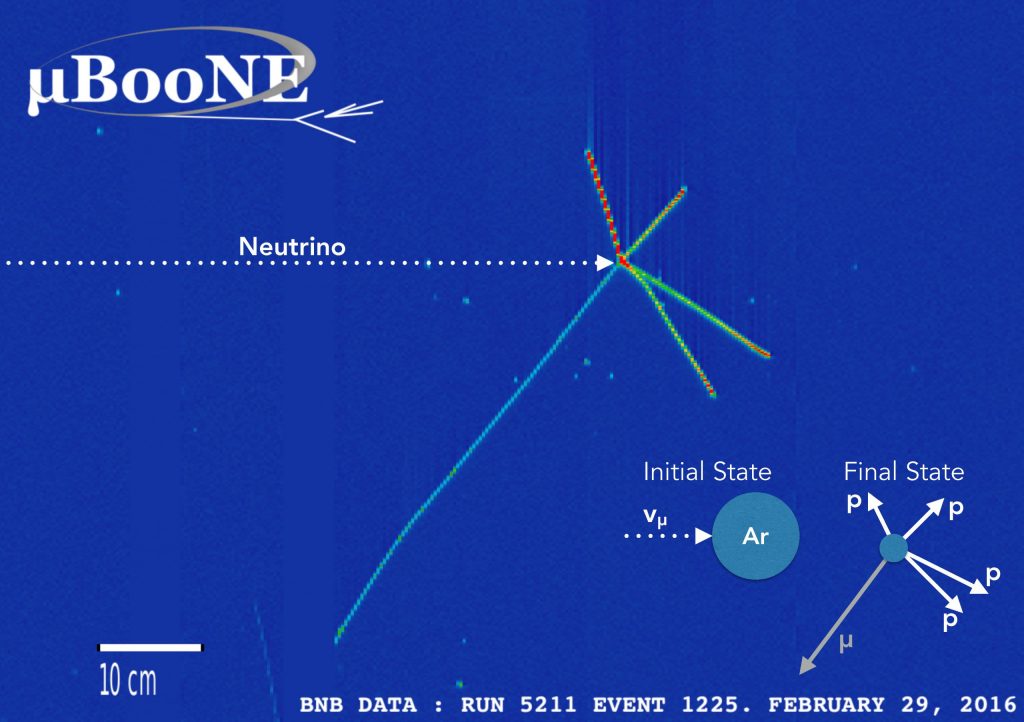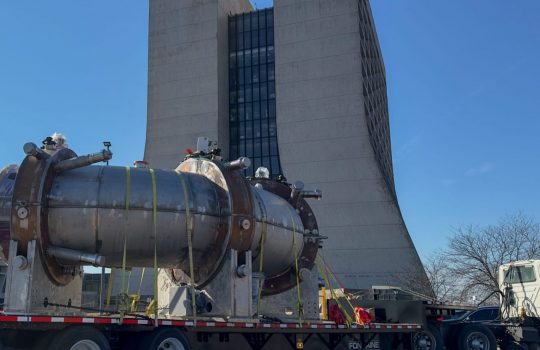The most recent physics result from the MicroBooNE experiment provides one of the very first rigorous tests of our understanding of neutrino interactions with argon. The paper, published in Physical Review Letters, presents the first ever measurement of neutrino interactions on argon as a function of the momentum and angle of the muon, a particle produced in the interaction (technically called a “double-differential cross section measurement”).
Neutrinos are among the least understood fundamental particles in the Standard Model of particle physics, a theory that describes the fundamental forces in the universe. While the Standard Model is one of the most robust, reliable and testable scientific theories ever produced, important questions remain unanswered. In particular, several outstanding questions about neutrinos have answers that remain mysteries: their absolute mass, the number of species and their role in the evolution of the universe.
It is crucial to understand these characteristics since they could lead to a proof of physics beyond the well-established Standard Model. Moreover, neutrinos could help us answer the long-lasting puzzle of the asymmetry between matter and antimatter in our universe. Current and future neutrino experiments will aim to address these questions with unprecedented precision.

A neutrino candidate event selected by this analysis is shown as a bird’s-eye view of the MicroBooNE detector. In this view, neutrinos arrive from the left. The five prongs show five particles that have been produced by a neutrino interaction with an argon atom. The longest prong is the candidate muon, going backwards with respect to the neutrino direction.
High-precision measurements of neutrinos and their oscillations require incredibly high-resolution detectors that are able to resolve the subatomic particles produced from a neutrino interaction. Liquid-argon time projection chambers are cutting-edge detectors employed for neutrino physics that allow particles produced by neutrino interactions to be tracked in three dimensions with millimeter-scale precision.
MicroBooNE is the first liquid-argon time projection chamber with the resolution and statistics to carry out a measurement of neutrino interactions using details of muon momentum and angle.
The measured cross section — here, the probability of a neutrino interacting with an argon nucleus — is compared to three different software programs that simulate neutrino interactions with argon (GENIE, NuWro and GiBUU), and it points to regions where current software programs need improvement in order to be able to describe observations, specifically in the high-muon-momentum, low-angle regions. This is of great importance for all future neutrino oscillation experiments that will use argon detectors, such as the Short-Baseline Neutrino program and the international Deep Underground Neutrino Experiment, both hosted by Fermilab, which rely on accurate modeling of the cross-section on argon to achieve their scientific goals.
This work is supported by the DOE Office of Science.
Marco Del Tutto is a Fermilab Lederman fellow on the MicroBooNE experiment. Anne Schukraft is a Fermilab associate scientist on the MicroBooNE experiment.



